Gerber has come out with the Back Paxe small ax. Before I get into the overall performance of their ax, I want to clear up some misunderstanding of what axes and hatchets are for. Today, there are so many hybrid models and so I believe this has caused some of the confusion.
A hatchet shouldn’t be confused with a hand ax. A hatchet technically is an ax yet it has a hammer-head or a butt on the back-side of the blade while an ax should not. A hand ax has a broad flat area, like a wedge shape, and without the v-shape cut out of the blade. Why is this important to know?
The clean, thick, wedge-shape of the ax allows it to cut wood logs more easily than the hatchet. The hatchet can be used to cut logs too but with its v-tapered head is better put to use hewing logs into smaller pieces, or for splitting kindling into smaller sections.
An ax, generally will have a heavier head and a longer handle, but this is not always true. An ax can have the same length handle as a hatchet.
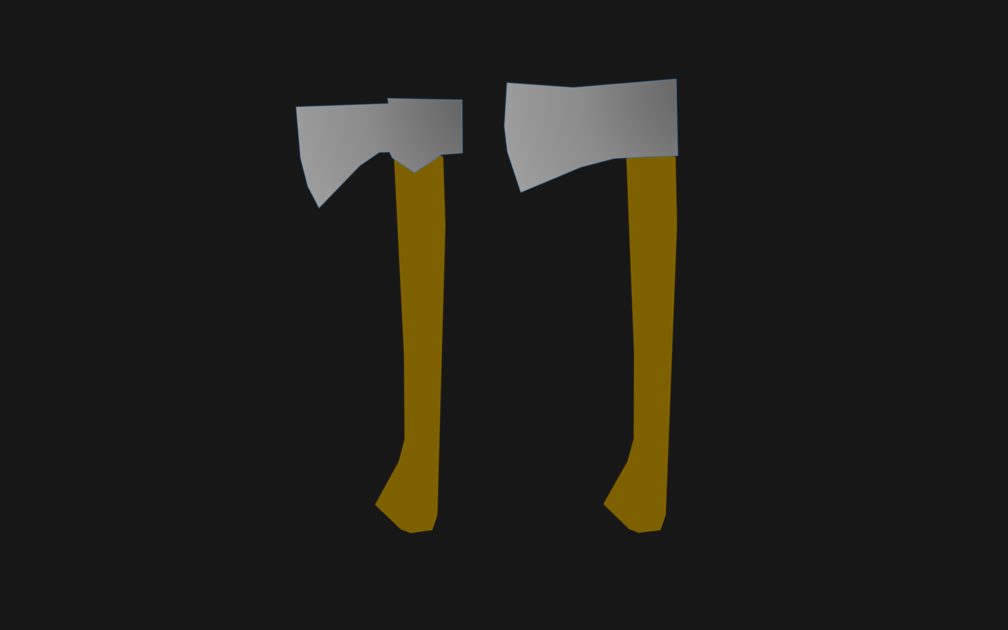
A hatchet, though similar in shape to an ax, tends to have a leaner head and thinner blade. It’s original intended purpose was to be a step-up from a utility knife for doing cutting, chopping and slicing. In fact, the hatchet is closer to it’s lighter-weight cousin the tomahawk.
A hatchet really is a light-weight ax. It could be used to cut through bone or cartilage when handling carcasses and for cutting kindling or saplings. In a sense, a hatchet is an all-purpose utility tool, whereas an ax was used for battle or for forestry. This is not to say that an ax couldn’t be used as a utility tool. You can find axes with longer handles, such as a two-handed ax, but it’s likely you would not find a hatchet with a long handle.
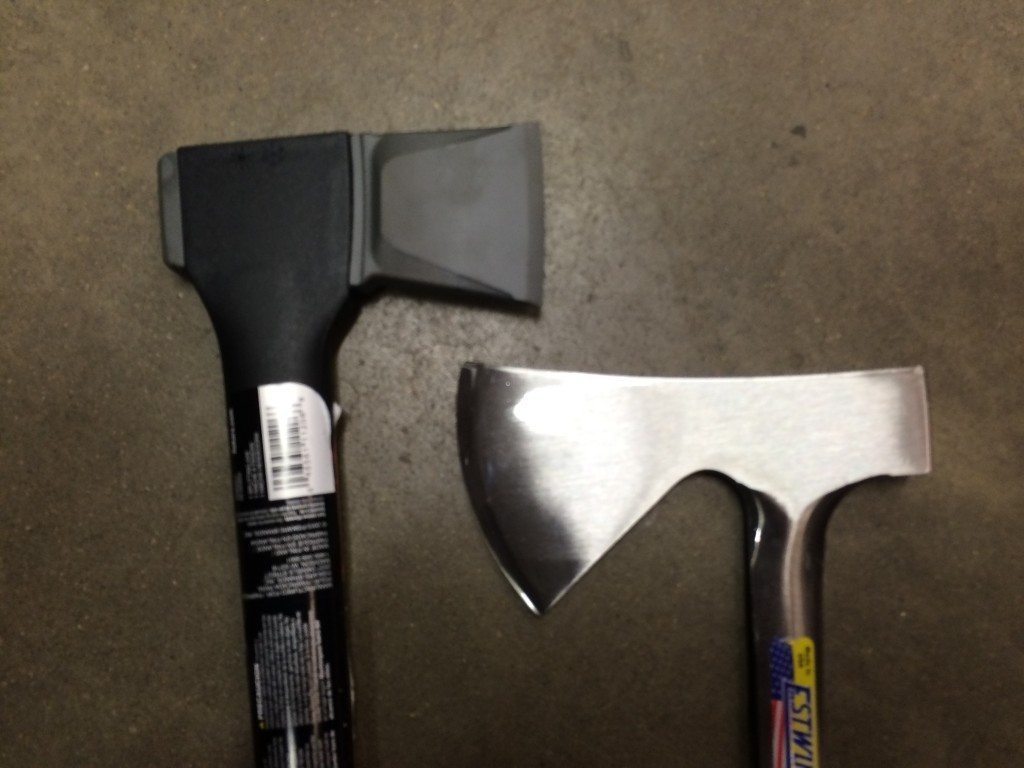
On the left: A heavy ax head on an ax crafted into a particular shape that makes it excellent for splitting logs. On the right: A light-weight camper’s ax. Similar to a hatchet but the head is very large and therefore it is an ax (it cannot be manipulated with easy dexterity as a hatchet could be)
Now, here’s where the confusion starts. I currently own the Gerber small ax called a Back Paxe Ax . The ax head is certainly wedge-shaped but the shoulder of the ax is inset, and contributes to the butt of the ax being more like a hammer-head protrusion. It still looks like a standard ax, but acts like a hatchet as well. Plastic, such as fiberglass, can be manipulated better than wood and I think this “hybrid” tool is a pretty good creation by Gerber.
Gerber has come out with a Bear Grylls hatchet, but other than the rubberized handle for the hatchet, the Back Paxe ax is nearly indistinguishable from the hatchet. Does it really matter? In then end we buy cool-looking survival stuff for their utility and not for a history lesson. Right?
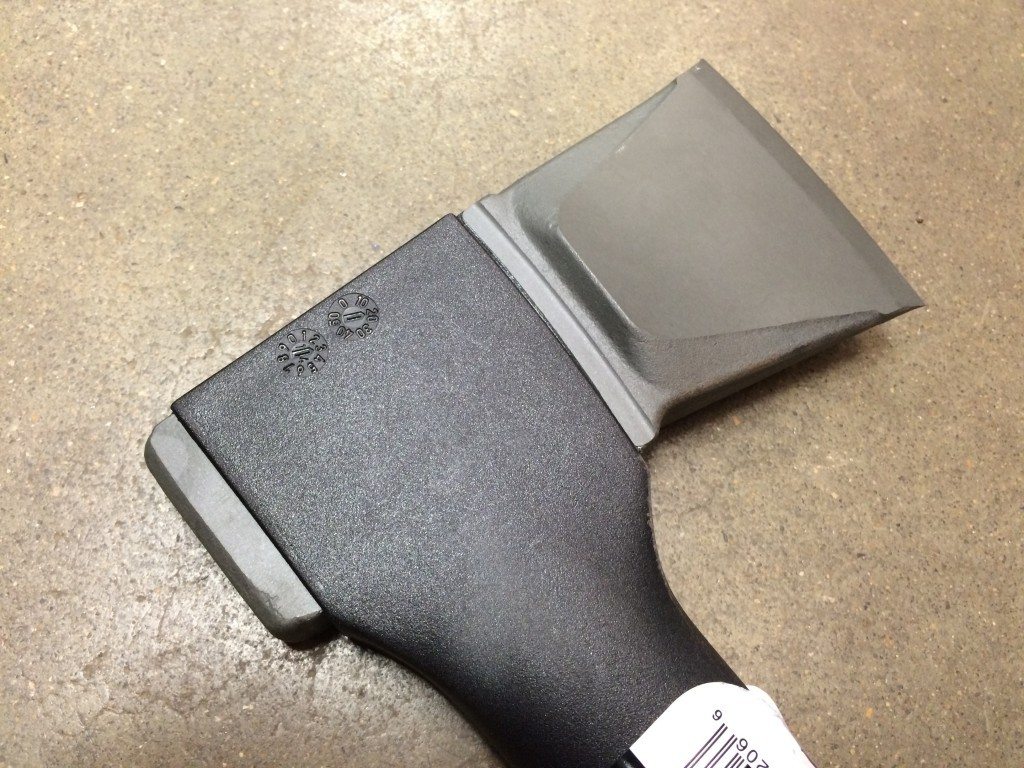
The Back Paxe Ax has a very strong, light weight head and it is very razor-sharp. I had my boys cut down the saplings behind our home and they put this Gerber ax to good use. This Paxe ax has remained sharp for years. It also has a sturdy handle with a hole at the base to attach a lanyard. Smart.
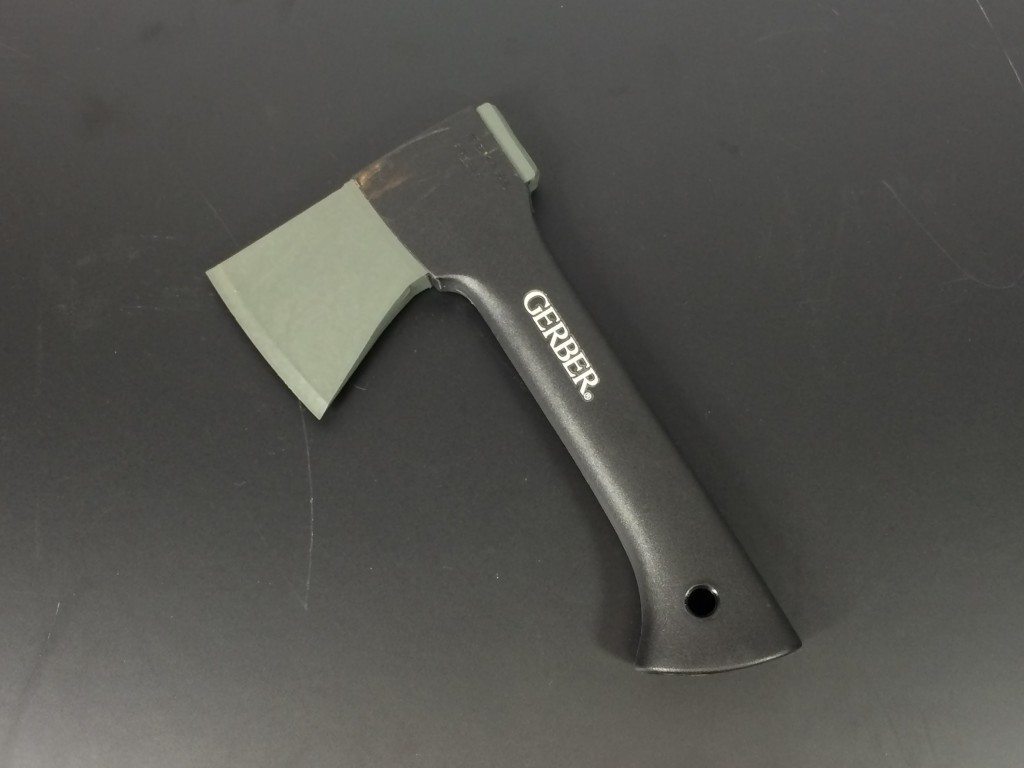
In the photo you might notice the rectangular striking surface on the head of this ax. You can pound down tent stakes, or use this to whack something open. Very useful. Some people have stated this ax is worthless to chop logs because the handle is too short. I would agree that the handle is too short for an ax and actually would term this a hatchet. If you are looking to chop wood then take a look at some of the really well-built axes on the market.
Lastly, the sheath can be affixed to your belt or backpack. I have had mine for over 6 years now and it has put up with my abuse. This is something I can easily hang to my belt when I’m camping. I actually don’t need a hatchet because this ax does the job of both.
Here’s two pictures I made to leave you some additional info on purchasing an axe.


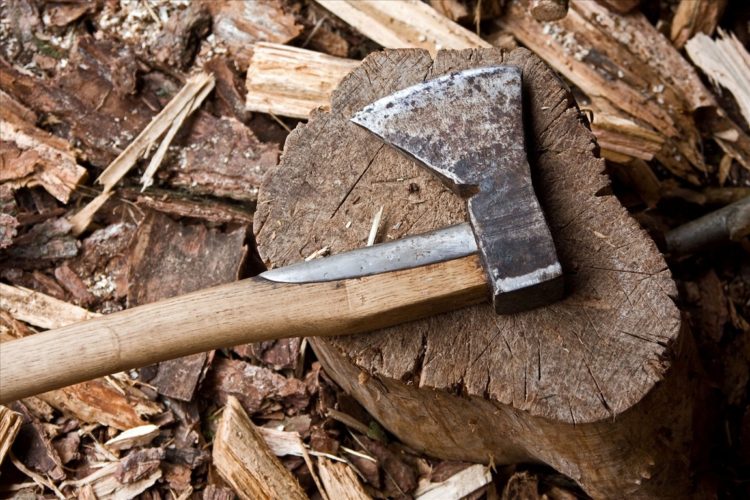
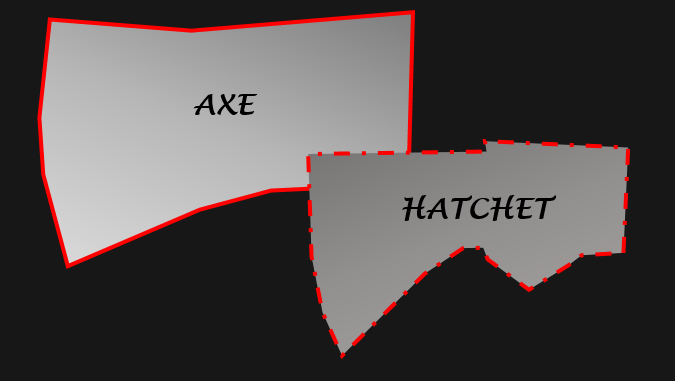
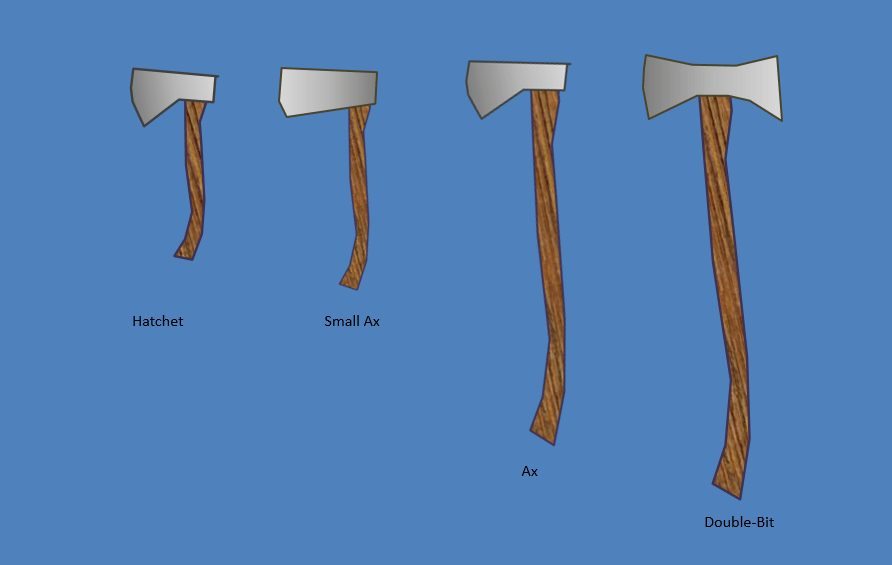
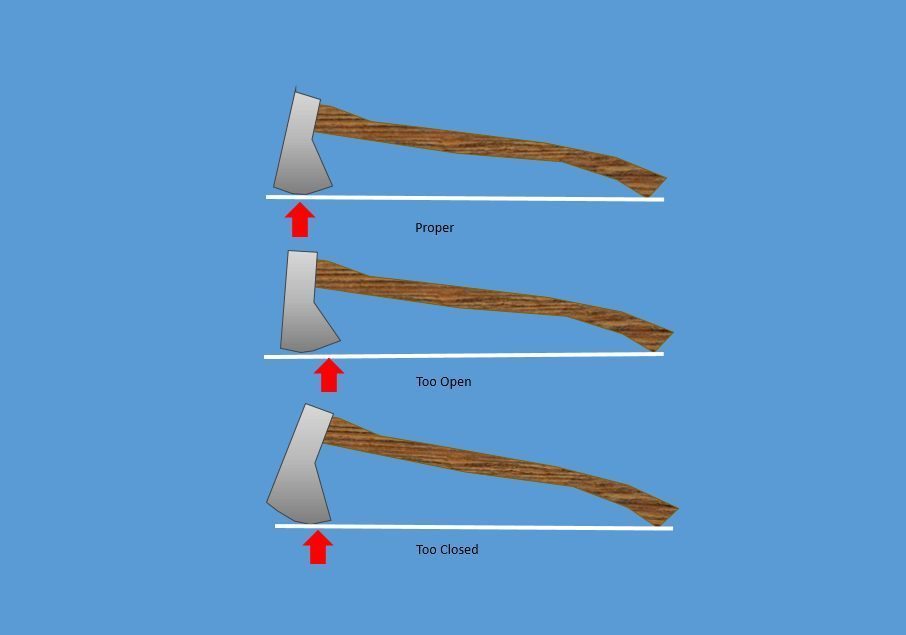
SO very educational!! It be a good to have this on YouTube! Thank you for sharing!
Thank you! I had given up on making the distinction. It’s like, show them a picture of a felling ax. It’s an ax. Show them a picture of a 3/4s ax (aka, “boys” ax, another term I don’t quite like). It’s an ax. Show them a picture of a hand ax and it’s like, “OMG — what do we call *this* now? We’ve already used the word ax twice. Let’s give it a French-based name that means ‘little chopper.’ Phweh! Crisis averted.” It’s “big” ax. Middle-sized ax. Hand ax.
I want to buy you a beer, sir. Thank you!